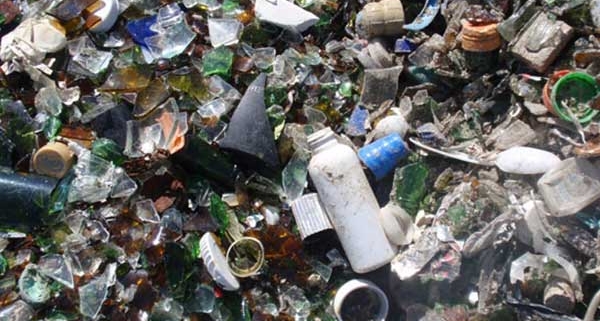The solidification method is that cement, plastics, water glass, asphalt and other coagulants are mixed with hazardous waste to solidify, so that the harmful substances contained in sludge are sealed in the solidified body and not leached, so as to achieve the goal of stabilization, harmlessness and reduction.
The solidification process can reduce the permeability of wastes and make them into final products with high strain capacity, thus turning hazardous wastes into harmless wastes.
1. Cement solidification method
Cement solidification is a method of treating hazardous wastes by using cement as solidifying agent. The hydration reaction will occur when the cement is mixed with appropriate proportion of water. When the cement loses its fluidity after setting, it will harden gradually. Cement solidification is a method that sludge (mixture of hazardous solid waste and water) is added to cement instead of water to solidify it.
When the harmful sludge is solidified, the hydration reaction of cement and sludge water generates gelatin, which contains the harmful sludge particles and gradually hardens to form cement solidified bodies. It can be considered that the structure of the solidified body is mainly the hydration reactant of cement. This method makes the harmful substances sealed in the solidified body to achieve the goal of stabilization and harmlessness.
Cement solidification method has higher utilization value because of its cheaper cement, simple operation equipment, high strength of solidified body, good long-term stability and resistance to heat and weathering.
The disadvantages of cement solidification method are: the leaching rate of cement solidified body is high, usually 10-4-10-5g/(cm2.d), so coating treatment is needed; because oil, organic acids, metal oxides and so on can hinder the hydration reaction of cement, in order to ensure the quality of solidification, the proportion of cement must be increased, resulting in higher compatibility of solidified body. Wastes need to be pretreated and additives added to increase the cost of treatment.
2. Plastic Curing Method
Plastics are used as coagulants to solidify sludge containing heavy metals and seal them up. At the same time, solidified materials can be used as agricultural or building materials.
Plastic curing technology can be divided into thermoplastic curing and thermosetting plastic curing according to the different plastics (resins) used. Thermoplastics, such as polyethylene and polyvinyl chloride resin, are solid at room temperature and become melt viscous liquids at high temperatures, which incorporate hazardous wastes into them and form Plastic solidified bodies after cooling. Thermosetting plastics include urea-formaldehyde resin and unsaturated polyester. Urea-formaldehyde resin has the characteristics of convenient use, fast curing speed, good curing at room temperature or heating. The curing agent formed with hazardous waste has good water resistance, heat resistance and corrosion resistance. Unsaturated polyester resin has suitable viscosity at room temperature and can be solidified at room temperature and pressure. It is easy to ensure the quality and is suitable for the solidification of hazardous wastes and radioactive wastes.
The characteristics of plastic curing method are: generally, it can be operated at room temperature; only a small amount of catalyst can be added to make the mixture coagulate; the compatibilization ratio and the density of the cured body are small. This method can treat both dry waste residue and sludge slurry, and plastic solid is non-flammable. The main disadvantage is that the aging resistance of plastic curing body is poor. Once the curing body breaks down, the leaching of pollutants will pollute the environment. Therefore, container packaging should be used before disposal, thus increasing the cost of treatment. In addition, harmful smoke released during the mixing process pollutes the surrounding environment.
3. Water glass curing method
Water glass solidification is based on sodium silicate as solidifying agent, inorganic acids (such as sulphuric acid, nitric acid, hydrochloric acid, etc.) as auxiliary agent, which reacts with harmful sludge according to certain proportions and condensation dehydration to form gel body, which will contain harmful sludge, and gradually form water glass solidification body through condensation and hardening. The solidification of sludge by water glass is based on the hardening, binding, inclusion and adsorption properties of water glass.
Sodium silicate curing process is characterized by simple operation, low cost of raw materials, low treatment cost, strong acid resistance, good water permeability and low leaching rate of heavy metals. However, this method is still in the experimental stage.
4. Bituminous solidification method
Asphalt solidification is a saponification reaction between asphalt as solidifying agent and hazardous waste under certain temperature, proportioning, basicity and stirring, so that hazardous waste is evenly contained in asphalt, forming a solidified body.
Compared with cement solidification, the leaching rate of harmful substances is lower. By using asphalt solidification, stable solidified solids can be obtained regardless of the type and nature of sludge. In addition, asphalt can harden immediately after solidification without 20 to 30 days of maintenance like cement. However, because of the poor thermal conductivity of asphalt, the efficiency of heating and evaporation is not high. If the moisture content in sludge is large, there will be foaming and entrainment of fog during evaporation, which will easily pollute the exhaust gas. For sludge with high moisture content, before asphalt solidification, water content should be reduced to 50%~80% by separation and dehydration. Moreover, asphalt is flammable, and it must be considered that if the asphalt is heated and evaporated, it will cause great danger.
5. Chemical Method
Chemical method is a method that utilizes the chemical properties of hazardous wastes to transform harmful substances into harmless final products by means of acid-base neutralization, oxidation-reduction and precipitation.
Many hazardous wastes can be detoxified by biodegradation, and the detoxified wastes can be removed by soil and water.



